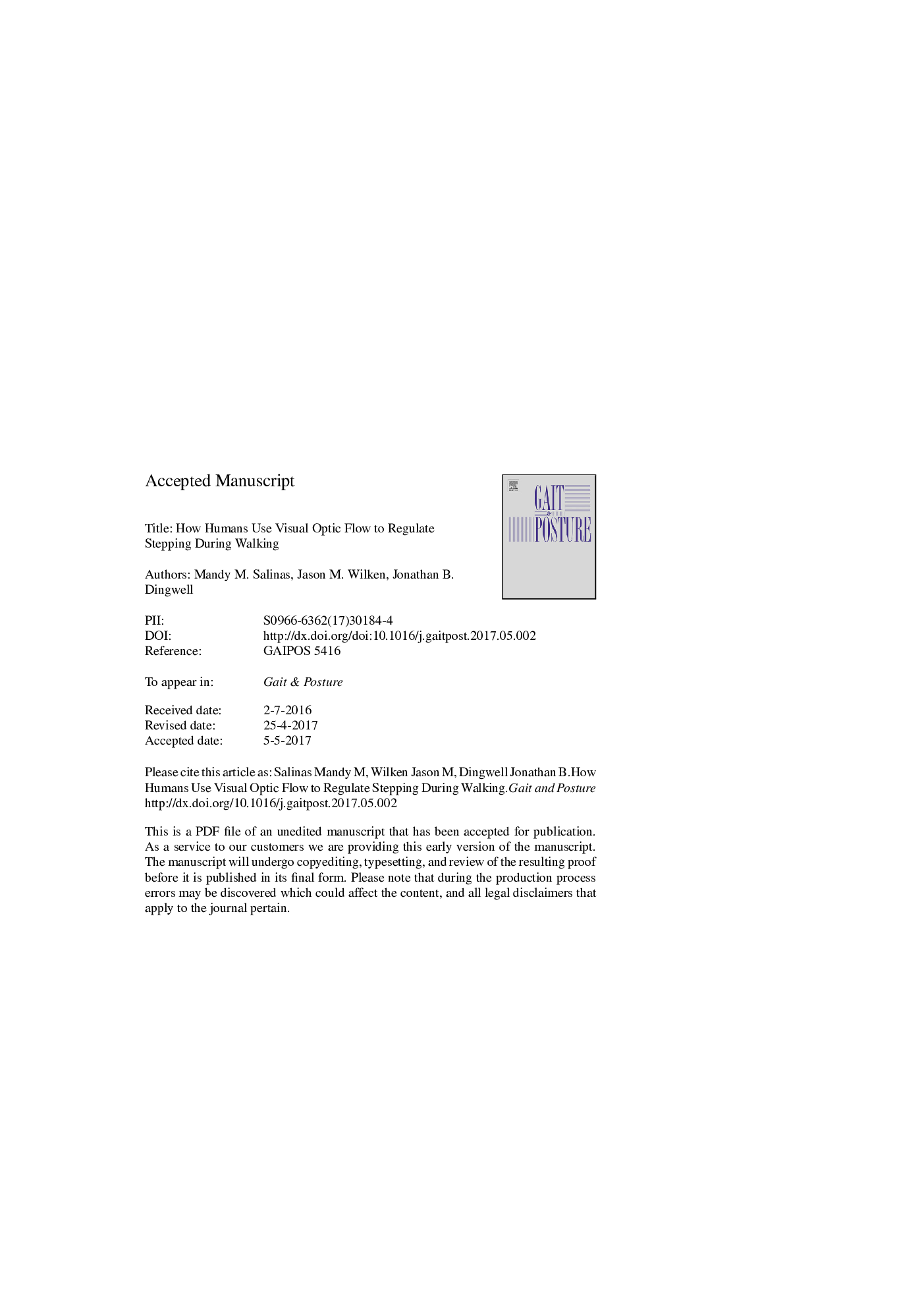| کد مقاله | کد نشریه | سال انتشار | مقاله انگلیسی | نسخه تمام متن |
|---|---|---|---|---|
| 5707797 | 1603838 | 2017 | 20 صفحه PDF | دانلود رایگان |
عنوان انگلیسی مقاله ISI
How humans use visual optic flow to regulate stepping during walking
ترجمه فارسی عنوان
چگونه انسان از جریان دید بصری برای تنظیم قدم زدن در حین پیاده روی استفاده می کند
دانلود مقاله + سفارش ترجمه
دانلود مقاله ISI انگلیسی
رایگان برای ایرانیان
کلمات کلیدی
راه رفتن، حرکت انسانی، کنترل پله، جریان نوری،
موضوعات مرتبط
علوم پزشکی و سلامت
پزشکی و دندانپزشکی
ارتوپدی، پزشکی ورزشی و توانبخشی
چکیده انگلیسی
Humans use visual optic flow to regulate average walking speed. Among many possible strategies available, healthy humans walking on motorized treadmills allow fluctuations in stride length (Ln) and stride time (Tn) to persist across multiple consecutive strides, but rapidly correct deviations in stride speed (Sn = Ln/Tn) at each successive stride, n. Several experiments verified this stepping strategy when participants walked with no optic flow. This study determined how removing or systematically altering optic flow influenced peoples' stride-to-stride stepping control strategies. Participants walked on a treadmill with a virtual reality (VR) scene projected onto a 3 m tall, 180° semi-cylindrical screen in front of the treadmill. Five conditions were tested: blank screen (“BLANK”), static scene (“STATIC”), or moving scene with optic flow speed slower than (“SLOW”), matched to (“MATCH”), or faster than (“FAST”) walking speed. Participants took shorter and faster strides and demonstrated increased stepping variability during the BLANK condition compared to the other conditions. Thus, when visual information was removed, individuals appeared to walk more cautiously. Optic flow influenced both how quickly humans corrected stride speed deviations and how successful they were at enacting this strategy to try to maintain approximately constant speed at each stride. These results were consistent with Weber's law: healthy adults more-rapidly corrected stride speed deviations in a no optic flow condition (the lower intensity stimuli) compared to contexts with non-zero optic flow. These results demonstrate how the temporal characteristics of optic flow influence ability to correct speed fluctuations during walking.
ناشر
Database: Elsevier - ScienceDirect (ساینس دایرکت)
Journal: Gait & Posture - Volume 57, September 2017, Pages 15-20
Journal: Gait & Posture - Volume 57, September 2017, Pages 15-20
نویسندگان
Mandy M. Salinas, Jason M. Wilken, Jonathan B. Dingwell,
